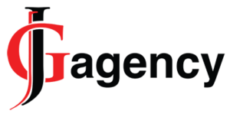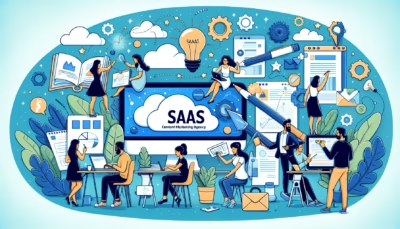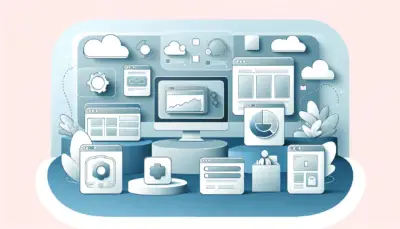Understanding SaaS Pricing Strategies
Picking the right SaaS pricing strategy is like choosing the perfect meal at a diner—it’s a big deal for your business! To nail it, you’ve got to grasp the different pricing models and what makes them tick.
Popular SaaS Pricing Models
When you’re checking out SaaS pricing options, three main models usually pop up:
Subscription Models: Think of this like your favorite streaming service. You whip out the card monthly or yearly. Easy-peasy, and it keeps that money machine humming with predictable cash flow. It’s a superstar in the SaaS universe for this very reason, as noted by SaaS Academy.
Pay-As-You-Go Models: This one’s the à la carte of pricing. Use it, pay for it—simple as that! It’s perfect for those with shows they binge on and those they don’t, offering flexibility for businesses with different appetites.
One-Time Use Models: It’s a throwback to simpler times—pay once and it’s yours forever. While it’s not super common in SaaS, some niche players swear by it.
| Pricing Model | Description | Popularity |
|---|---|---|
| Subscription | Monthly or yearly payments | High |
| Pay-As-You-Go | Charges based on usage | Moderate |
| One-Time Use | Single payment for lifetime access | Low |
Factors Influencing SaaS Pricing
Loads of things sway your SaaS pricing. Getting these right is like finding the secret sauce to satisfy business dreams and customer cravings:
Value Proposition: What folks think of your product is a biggie. If they reckon it’s the bee’s knees, they’ll loosen those purse strings (source: Userpilot).
Business Goals: Whether you’re shooting for the stars with super-fast growth, grabbing a bigger slice of the pie, or just stacking those dollars, your goals will steer your pricing wheel.
Company Size: Whether you’re a fresh start-up or a big player, your business size can sway how you price stuff.
Competitors: Peeking at what the rivals are doing can give you a leg up and help you pitch yourself with the best of ’em.
Buyer Persona: Knowing who your people are, what they really need, and how much they’re okay shelling out is crucial. By breaking customers into categories based on what they want, companies can offer spot-on solutions (source: Amplitude).
If you’re hungry for more on how to slice and dice your market, check out our guide on strategies for customer segmentation.
Internal dreams like company aims and outside stuff like competition need to play nice when you’re making a killer content strategy.
For more on turning these strategies into growth gold, dive into our stuff on b2b saas growth marketing and figuring out your saas customer acquisition cost.
Choosing the best pricing setup might just be the key to your business hitting new heights. Don’t forget to use all the cool tools out there to keep tweaking and improving your game plan.
Value-Based Pricing Strategies
Trying to figure out the right pricing for your SaaS product? Let’s talk about value-based pricing, which means pricing your product according to how much value it brings to your customers. In other words, it’s about making sure customers feel like they’re getting their money’s worth and then some.
Adobe’s Value-Based Pricing Example
Take Adobe, for example. They hit the jackpot with value-based pricing in their SaaS lineup by highlighting just how invaluable their tools are for creative folks. They moved from selling their stuff just once to letting customers subscribe. This way, they keep adding goodies like updates, cloud storage, and teamwork tools. And? People are more than happy to shell out a bit extra year after year. It’s a classic case of showing how much your product is worth to your customers can keep the cash rolling in.
Check out what Adobe’s charging these days:
| Adobe Creative Cloud Plan | Monthly Cost |
|---|---|
| Photography Plan | $9.99 |
| Single App | $20.99 |
| All Apps | $52.99 |
By matching what they charge with what they deliver, Adobe makes sure folks feel they’re getting a bang for their buck.
Implementing Value-Based Pricing
Want to roll out value-based pricing for your SaaS? Here’s a cheat sheet to get you started, all about understanding and pumping up how people value your product.
Identify Customer Segments: Know your audience inside and out. Break them down into groups based on what they need, how they use your product, and how much they’re willing to pay. Build some buyer personas—kind of like fictional customers—to really get what makes them tick. (P.S. Check our b2b saas content marketing article for bonus tips.)
Understand Your Value Proposition: Get clear on what makes your product awesome and why people should care. Pinpoint the perks and features that your crowd loves. Need some pointers? There’s a handy piece on highlighting the value proposition.
Quantify the Value: Lay down the numbers. What’s your product’s ROI? If it saves a customer a cool $100,000 a year, you might charge about 10% of that, so $10k a year. It’s a tried-and-true rule (LinkedIn).
Set Price Based on Value Perception: Use surveys, chats with your customers, and other data to nail down what price seems fair and valuable to different customer segments.
Communicate Value Effectively: Make sure your marketing screams the benefits of your product. Sprinkle in some customer stories, case studies, and detailed examples to make your point shine. For more, wander over to our take on saas marketing strategies.
Monitor and Adapt: Keep an eye on your pricing game plan to make sure it keeps up with market, customer feedback, and what the competition’s doing. Stay flexible and ready to tweak things based on how your customers see value.
Following in the footsteps of champs like Adobe and Zoom, focusing on value-based pricing can craft a pricing setup that your audience connects with, showcasing the real worth of what you offer. For more wisdom, check out our write-up on 6 common saas marketing strategy mistakes.
User-Based Pricing Models
Picking the right pricing for a SaaS product often feels like picking the right pizza topping—everyone has an opinion, but you need to find what works best for your taste. Many companies jump on the user-based pricing bandwagon because it’s like the cheese pizza of pricing: simple, scalable, and most importantly, something everyone understands. So, here’s my take on user-based pricing and why it’s worth considering.
Exploring User-Based Pricing
User-based pricing, often your familiar “per seat” style pricing, charges based on who’s actually using the product. It’s predictable, it’s scalable, and frankly, it fits companies whether they’re a startup or a well-oiled machine. Take Slack for example; they charge based on the number of active users, making monthly bills as predictable as your Netflix subscription (SaaS Academy).
| SaaS Company | Pricing Model | Description |
|---|---|---|
| Slack | User-Based Pricing | Charges based on active users each month |
| Evernote | Per Feature Pricing | Pricing plays hopscotch with features in each package |
Checking out Pacific Crest’s yearly peek into SaaS trends? Turns out, per user pricing is the rockstar among SaaS providers (Cobloom). It’s like everyone’s favorite because it’s just that easy to get your head around.
Benefits of User-Based Pricing
Predictable Money Flow:
Your income flows steadily because costs go up or down with user numbers. Makes planning the financial year feel a little less like crystal ball gazing.Scale Up Smoothly:
Got a growth spurt? Not a problem. Add users like you’d add Snap filters, cost just bumps up alongside.Clarity for Everyone:
Simply put, folks get it. They see what they’re paying for and can easily connect cost with the people using the service.Team Spirit:
This model’s a winner because it links the SaaS provider’s best interests with the customer’s growth. As customers scale, both parties find success—everyone’s a winner!
By choosing user-based pricing, companies like Slack get to offer something not only flexible and easy to grow with but also perfectly in tune with businesses kind of like a tailored suit.
If you’re itching to know more about the magic behind different SaaS pricing styles, check out our stories on saas marketing strategies and b2b saas marketing. Jump right into the maze of SaaS pricing and get the lowdown on making those all-important growth calls for your biz.
Following these gems can help anyone from SaaS marketing gurus to brand-new startup founders cook up a thoughtful pricing strategy. Dive into the good stuff with our take on saas pricing strategy for all those unique needs. And for hitting those high notes in SaaS content, check out our high converting landing page templates for saas marketing companies or learn the ropes of b2b saas content marketing.
Customer Segmentation for Pricing
If you’re running a SaaS biz, knowing who your customers really are can totally change the game. Spotting what they need lets you charge smart prices that make them smile and keep some cash in your wallet too.
Importance of Customer Segmentation
Let’s face it, no two customers are brought into this digital world the same way. In SaaS, that’s more than true. So why bother with plain ol’ one-size-fits-all pricing when you’ve got a smorgasbord of quirky customers? Here’s why busting them into segments is a no-brainer:
- Targeted Marketing: Segments are like having a GPS for your marketing plans. You find just the right folks for your snazzy ads, boosting those clicks and getting on better terms with your customers.
- Customized Pricing: Different groups, different vibes—some might see your service as gold, others as silver. By watching their ways, you can set prices that match what each group thinks you’re worth.
- Resource Allocation: Focus your efforts like a laser beam on those lucrative segments. You’ll know where to pour resources for the biggest bang.
- Product Development: When you’ve got inside info on what your customers want, building those killer features to meet their quirky needs becomes a breeze.
Strategies for Customer Segmentation
Let’s chat about carving up your audience pie. These tried-and-true methods have your back:
- Needs-Based Segmentation
This one zeros in on what makes your customers tick. Know what burns their biscuits and what sweetens their day. Give them what they want by focusing on three areas: cash worries, brand feels, and usage quirks.
| Needs | What We’re Eyeing | Goodies You Cook Up |
|---|---|---|
| Financial | Price Sensitivity, Budget | Custom Pricing Plans |
| Emotional | Brand Loyalty, Satisfaction | Tailored Ads and Marketing |
| Physical | Usage Frequency, Features Used | Feature Tweaks and Add-Ons |
- Value-Based Segmentation
Here, it’s all about getting the most bang for your buck. Enter the hero model RFM (Recency, Frequency, Monetary)—a practical way to find who’s spending what and shape your sales mojo accordingly.
| Segment | RFM Side of Things | Your Plan of Action |
|---|---|---|
| High Value | Recent buys, Frequent use | Exclusive Deals, VIP Support |
| Medium Value | Sometimes here, Spends okay | Keep ‘Em Close, Loyalty Rewards |
| Low Value | Rare visits, Spends light | Nudge with Upsells, Basic Offers |
- Behavioral Segmentation
Eyes on the prize here—this is where you watch their clicks, moves, and grooves within your product. Behavioral peeping helps create super-specific plans to keep them hooked.
| Behavior | What’s On Radar | What You’re Whipping Up |
|---|---|---|
| Highly Engaged | Daily Logins, Feature Hopping | VIP Extras, Premium Features |
| Moderately Engaged | Weekly visits, Uses a bit | Regular Nods, Highlighted Features |
| Low Engagement | Infrequent, Barely there | Wake-Up Calls, Handy Tutorials |
Cracking customer segmentation is like finding the secret sauce for your SaaS pricing models, and trust me, it’s a total win-win in the customer grin department. Want to geek out on more ways to jazz up your game? Check out our takes on b2b saas marketing and saas marketing strategies.
Optimizing SaaS Pricing Models
Picking the right pricing for your SaaS is kinda like trying to choose a movie on a Friday night—do you go for something everyone will enjoy or that artsy film only a few ‘get’? In this chat, I’ll spill the beans about nailing a pricing plan that both swells your pockets and keeps your subscribers smiling.
Importance of Pricing Strategy
First off, a killer pricing strategy isn’t just about sticking a number on things. It’s like mixing the perfect cocktail of what your product brings to the table, what your goals are, knowing your audience, and peeking over at what competitors are dishing out. So, why does this matter?
- Steady Cash Flow: Subscription models—hello, pretty pennies rolling in like clockwork! It’s a hot ticket in SaaS (SaaS Academy) and vital for kicking growth up a notch.
- Brand Image: How you price can tell folks if you’re the fancy champagne or the comfy coffee brand. It’s all about that first impression.
- Keeping Customers Happy: If the cost and what customers get don’t match up, they’re out. Match ’em up, and it’s all smiles and loyalty.
Strategies to Optimize Pricing
Snazzing up your SaaS pricing doesn’t happen accidentally. Try out these tricks to get those numbers just right:
| Strategy | What’s It About? | Handy Tools |
|---|---|---|
| Customer Segmentation | Break down your customers like a DJ splits beats. Understand ’em, and you’ll know just the right price. (Amplitude) | CRM Software, Data Analytics Tools |
| A/B Testing | Mix things up with different prices to find that sweet spot. | Optimizely, VWO |
| Value-Based Pricing | Set prices based on what your product means to folks. Take Adobe’s Value-Based Pricing Example—it’s about matching the sticker price to value. | Customer Feedback Tools, Surveys |
| Competitive Analysis | A little quiz on where you stand next to others can shape your pricing vibe (Cobloom). | Market Analysis Software |
| Regular Re-Evaluation | Like that wearisome TikTok dance—keep checking and tweaking your pricing based on what’s buzzing in the biz. | Financial Analysis Tools |
Want to dig into customer typecasting? Peep our piece on crafting a killer content game plan for your SaaS gig.
Get into the groove with your pricing strategy and these killer techniques, and you’ll be on track for continual growth and grin-worthy clientele. To stay sharp, size up the field regularly and give your approach the occasional buff and polish. The secret sauce to perfecting SaaS pricing? Test, tweak, and triumph.
Discover more on b2b saas content marketing, saas product marketing, and a bunch of other goodies to amp up your playbook.
Competitive Pricing Analysis
Checking out what others are charging is like finding the secret sauce for your SaaS business. It’s about figuring out who’s doing what, so you can step up your game and stand out. Let’s chat about how to peek into a SWOT analysis and sneak past your competitors.
SWOT Analysis for SaaS Pricing
Think of a SWOT analysis as detective work on what makes you tick and, well, what might make you trip. Here’s a cheat sheet:
| Aspect | Description |
|---|---|
| Strengths | What’s rocking it on your pricing menu? Maybe you’ve got cool features or stellar service. |
| Weaknesses | Where’s the hiccup? Maybe it’s the price or your basic plan is too, well, basic. |
| Opportunities | What’s fresh out there? Are there trends or tech goodies you should grab? |
| Threats | What’s lurking out there? Could it be other eager companies trying to woo your customers away? |
Doing a SWOT rundown sheds light on:
- Strengths: Have you got any features that make opponents weep in envy?
- Weaknesses: Is your pricing a maze? Maybe it’s time for a little cleanup.
- Opportunities: What’s trending that should be in your shopping cart?
- Threats: See any new kids on the block taking your spotlight?
Outsmarting Competitors in Pricing
Winning the price game is all about being one step ahead and keeping your customers smiling:
Snoop on Competitors: See what they’re offering and figure out how to make your stuff look like the better choice (Medium).
Value-Priced Bargains: Price your goods based on how awesome people think they are. That way, folks might dig deeper in their pockets as they think it’s worth it (Cobloom).
Divide and Conquer your Customers: Notice who’s most valuable and set your pricing to get the most cash from them. Read more on nailing customer groups here.
Freemium Tease: Hand out a freebie to pull folks in, but make sure it’s so good, they’ll want to pay to upgrade. Watch those costs though (Stax Bill).
Shine with Promotions: Use ads to let folks know why they shouldn’t sleep on your offerings. Get creative with content strategies like those shared in leveraging content for SaaS lead generation.
Mix and match these strategies to one-up your rivals. For a brainy deep-dive on the best pricing mojo, check out our guide on choosing the right saas pricing strategy: a comprehensive guide.





